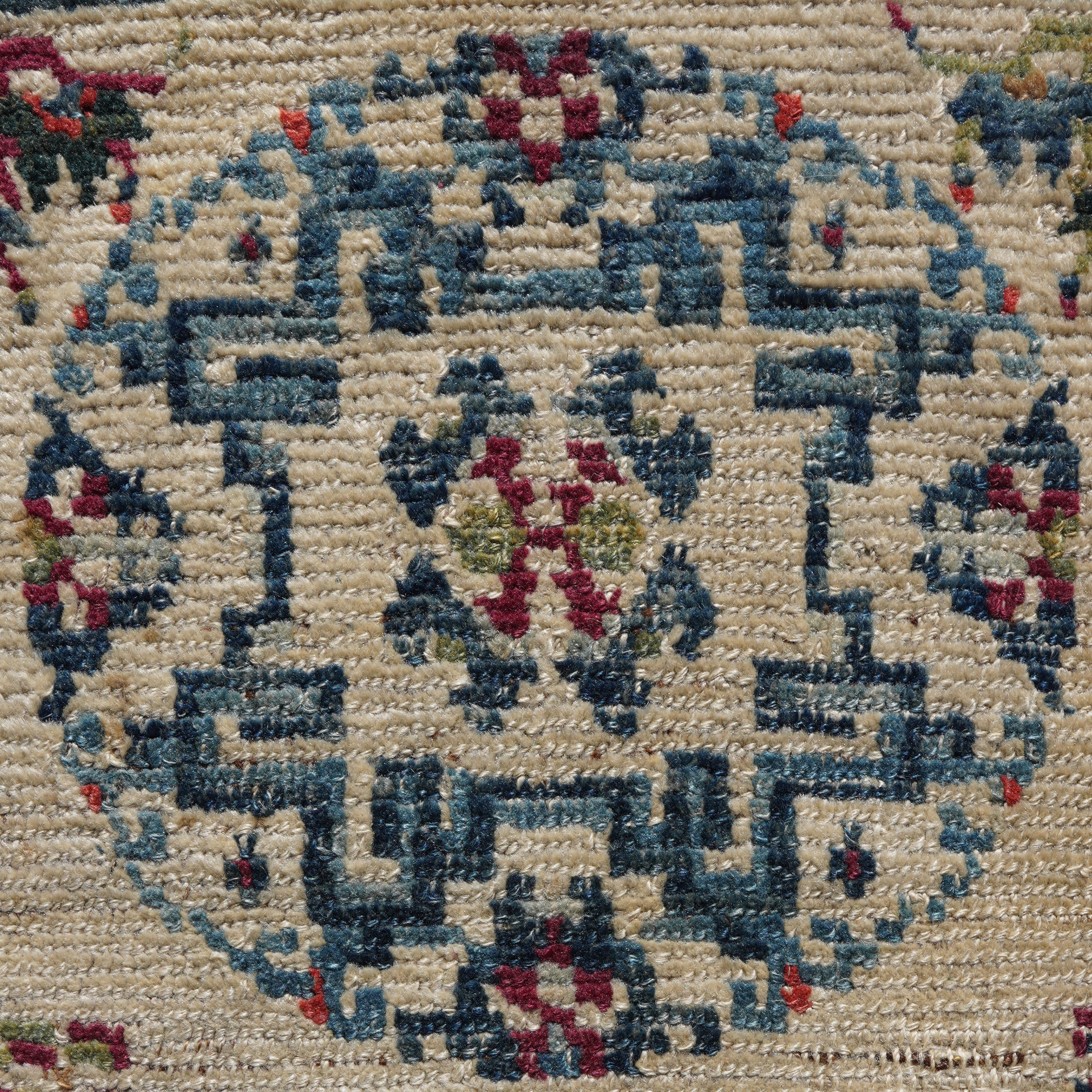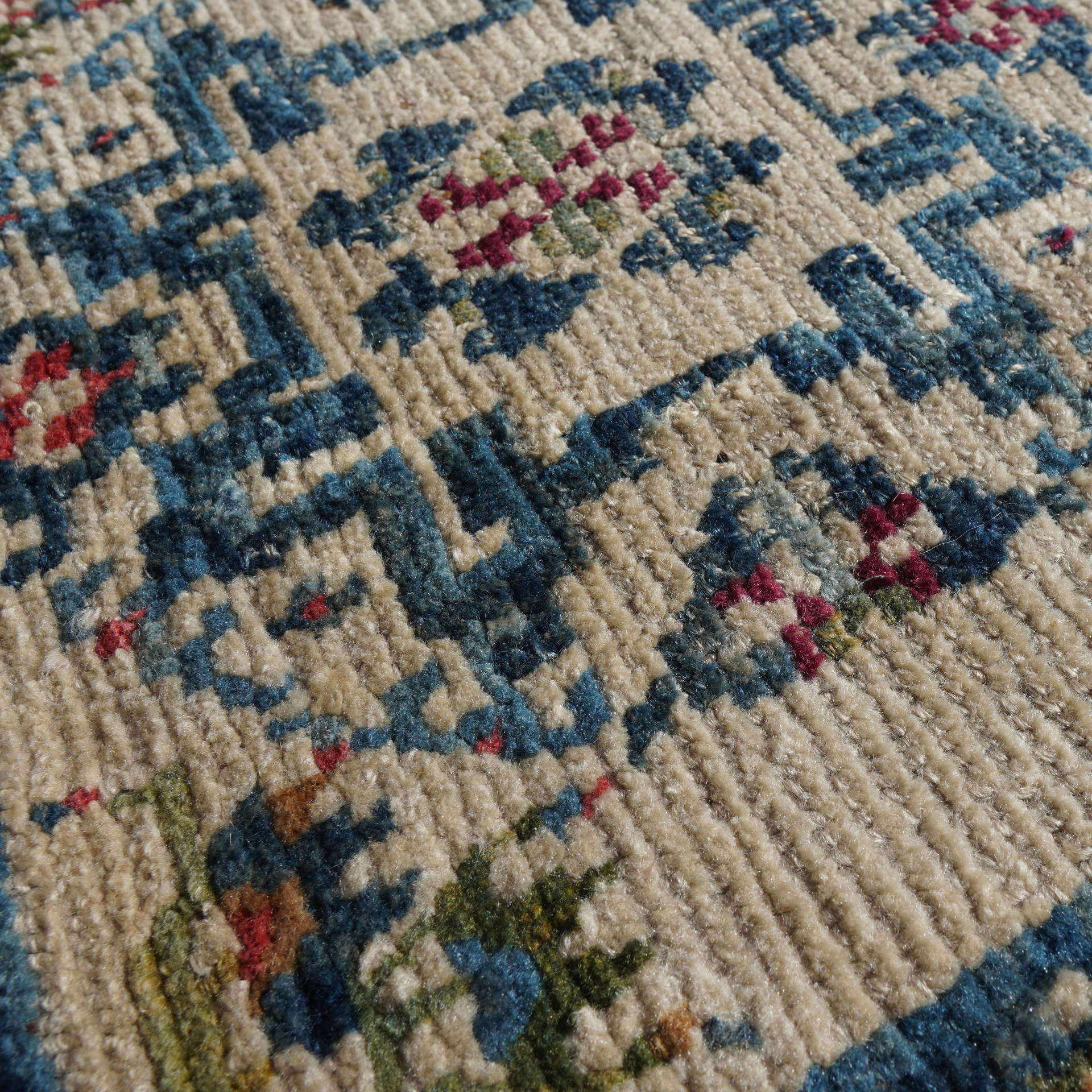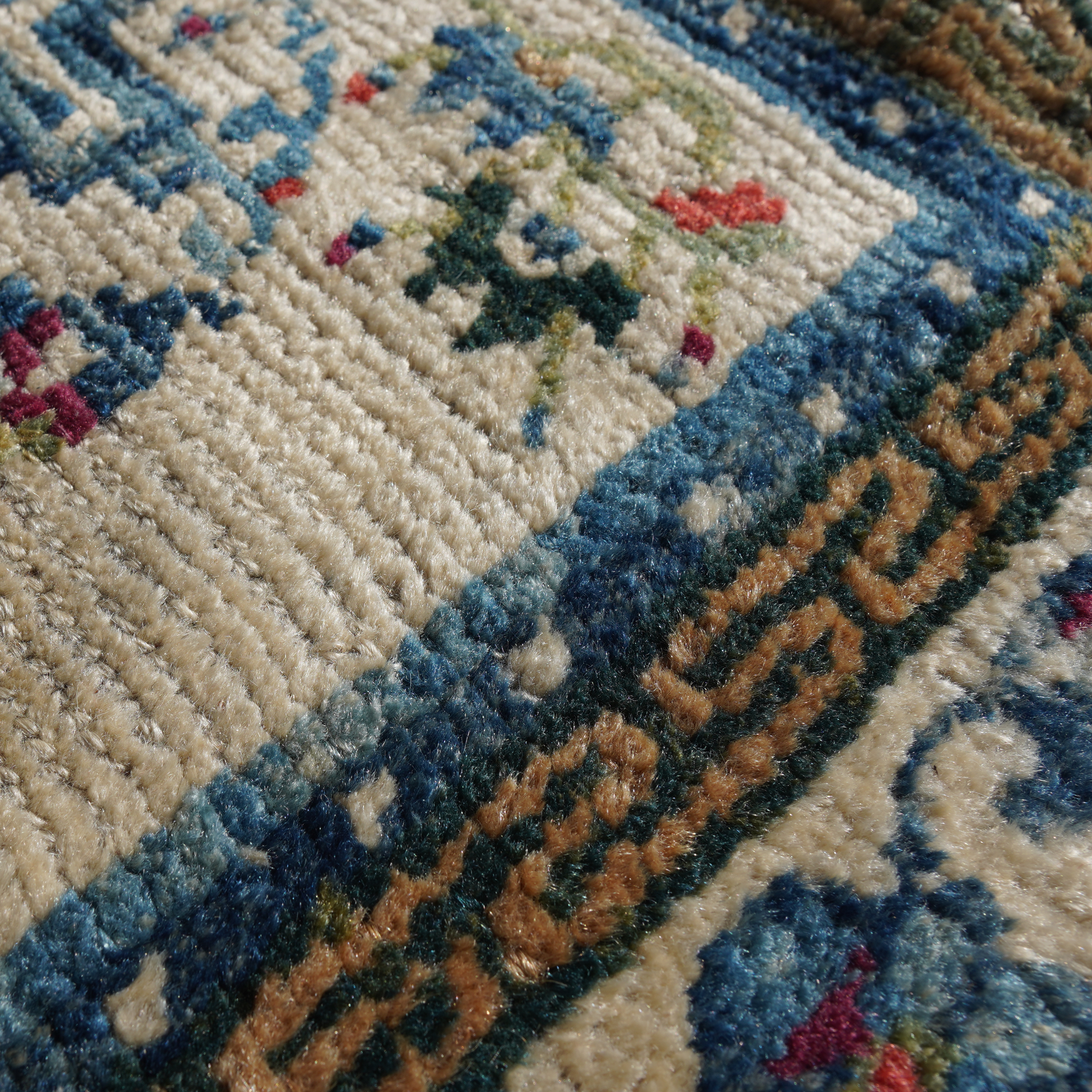 Image 1 of 7
Image 1 of 7

 Image 2 of 7
Image 2 of 7

 Image 3 of 7
Image 3 of 7

 Image 4 of 7
Image 4 of 7

 Image 5 of 7
Image 5 of 7

 Image 6 of 7
Image 6 of 7

 Image 7 of 7
Image 7 of 7








19th C. Tibetan Rug - 3’7” x 2’2”
#2513 Tibetan Rug
3’-7” x 2’-2”
AGE & ORIGIN:
Late 19th C.
Tibet
OVERVIEW:
There are a few weavings typical to Tibet, mostly limited to mats and small rugs. After the annexation of Tibet, many rugs and textiles would be woven by Tibetan refugees in Nepal and India, and would become more uniform albeit still using motifs and symbols from Tibetan antiquity. While Tibetan weavings can be incredibly difficult to age, a combination of factors are taken into account to place this piece in the 19th C. and wear, colors and weave all play a part in this.
While these are many of these rugs that would display dragons, phoenixes, tigers, this opts for less ostentatious design, yet nonetheless displays very skilled weaving. The use of negative space of the white field on the eight pointed blue stars as well as magenta accents are very pretty and are indicative of character that many of these pieces have lost in more contemporary weavings.
CONDITION:
There is end loss which has been folded over and a piece of fabric has been sewn to the back, potentially as a form of preservation. Given the condition and fabric already attached to the back, this piece may serve better as a wall object for decor or even as an oversized pillow rather than a rug.
#2513 Tibetan Rug
3’-7” x 2’-2”
AGE & ORIGIN:
Late 19th C.
Tibet
OVERVIEW:
There are a few weavings typical to Tibet, mostly limited to mats and small rugs. After the annexation of Tibet, many rugs and textiles would be woven by Tibetan refugees in Nepal and India, and would become more uniform albeit still using motifs and symbols from Tibetan antiquity. While Tibetan weavings can be incredibly difficult to age, a combination of factors are taken into account to place this piece in the 19th C. and wear, colors and weave all play a part in this.
While these are many of these rugs that would display dragons, phoenixes, tigers, this opts for less ostentatious design, yet nonetheless displays very skilled weaving. The use of negative space of the white field on the eight pointed blue stars as well as magenta accents are very pretty and are indicative of character that many of these pieces have lost in more contemporary weavings.
CONDITION:
There is end loss which has been folded over and a piece of fabric has been sewn to the back, potentially as a form of preservation. Given the condition and fabric already attached to the back, this piece may serve better as a wall object for decor or even as an oversized pillow rather than a rug.

